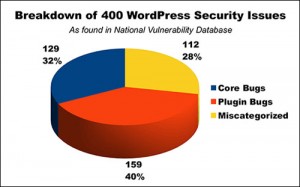“People work for money but go the extra mile for praise, recognition and rewards.” ~ Dale Carnegie ~
Studies have overwhelmingly shown that employees that feel appreciated will put in more effort and stay longer in their organizations. A study by Glassdoor in 2013 showed that more than 50% of employees would stay longer at their companies if bosses showed more appreciation. As well as wanting to stick around longer, 81% of staff indicated that they were motivated to work harder when their boss shows them appreciation. While most companies have some sort of recognition program for employees, many are still based on tenure. People are rewarded simply on the amount of time they have stuck around, regardless of whether they contributed greatly or simply put in time and kept a chair warm. Not only do many recognition programs have little or no impact, if not carried out well, they can actually have a negative impact and act as a disincentive. To do employee recognition well in a way that has real and lasting impact, demands that an organization take the time and make the effort to find out what makes their people feel appreciated.
One Size Does Not Fit All
When it comes to appreciation we are not all the same. In The 5 Languages of Appreciation in the Workplace, Gary Chapman and Paul White lay out five different ways that people prefer to be appreciated. If the way of appreciation misses the mark (in the way that the employee wants to receive it) the impact will be wasted. In the worst case it can be a turnoff for the person, making them feel they are not heard, not seen, nor appreciated. The best appreciation comes from getting to know the complete lives of employees well, not only about their work but outside of the workplace.
Make it Specific to Results Achieved and/or Behaviour Witnessed
An appreciation that paints everyone with the same brush, such as the traditional staff appreciation day, totally misses the mark when it comes to making anyone feel rewarded. The person who has put in extra effort and achieved massive results is lumped together with the one who did just enough to avoid getting fired. The staff member who put in extra effort will likely feel resentful that the slacker is being rewarded to the same degree that they are. This sends the message that staff appreciation is merely a function that organizational management has to carry out in order to satisfy some criteria handed down from above, rather than a sincere effort to acknowledge staff. Another way for managers to lose trust and respect of staff is to give out kudos, gifts and rewards only during times when their superiors are present. Instead of feeling appreciated, staff will feel they are being used by their managers to earn points with those above them.
Make it Timely and Frequent
Recognition should be given as quickly as possible after someone has reached a goal, done something significant or been especially supportive of a team member. The closer to the event the more it will be remembered and the greater impact it will have. Instead of waiting for a major event, where many people are recognized at the same time, carry out small celebrations spontaneously and frequently. If someone does something that goes above and beyond, have a system in place where they can be recognized immediately. This doesn’t have to involve a great deal of expense or time. Hand written notes, photos with team members to put on the wall, buying someone coffee or lunch are good ways to show someone that their efforts have been noticed. Building a culture of frequent celebrations sends the message that extra effort will be seen and acknowledged. It also makes the workplace a lot more vibrant and fun.
Encourage Staff to Recognize One Another and Make It Easy for Them to Do So
Top down recognition can be perceived as being political, self-serving and part of the job description. The people we work directly with have the most knowledge of the work we are doing are so it is important that they have a way to acknowledge our efforts. Often people who are high performers, but quiet and not comfortable drawing attention to themselves, are overlooked by their superiors. Have a platform, either online or a physical message board, where staff can share what they value about one another are. This is a great way to let others know what great people they work with and is an effective ways of workplace bonding and team building.
Avoid Favoritism or Any Appearance of Favoritism
It is human nature to want to reward people that we like and therefore easy for management to show favoritism or be seem to favor some staff over others. While few workplaces escape charges of bias from those that work there, steps can be taken to minimize this when it comes to who receives recognition. One way is to allow coworkers to decide who gets to receive special recognition within the group rather than leaving it to management. If possible, expand this to customers, suppliers or anyone else that interacts with the group on a regular basis. This avoids the resentment that can come from members of the group when they perceive that colleagues may be sucking up in order to get special preferential treatment, attention or promotions.
Business & Finance Articles on Business 2 Community(75)
Report Post







